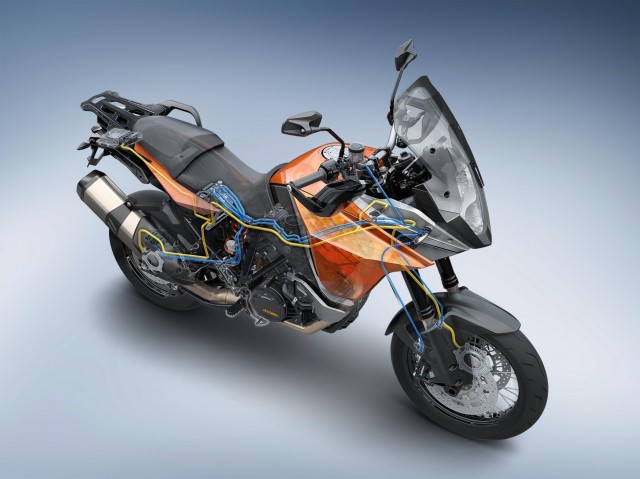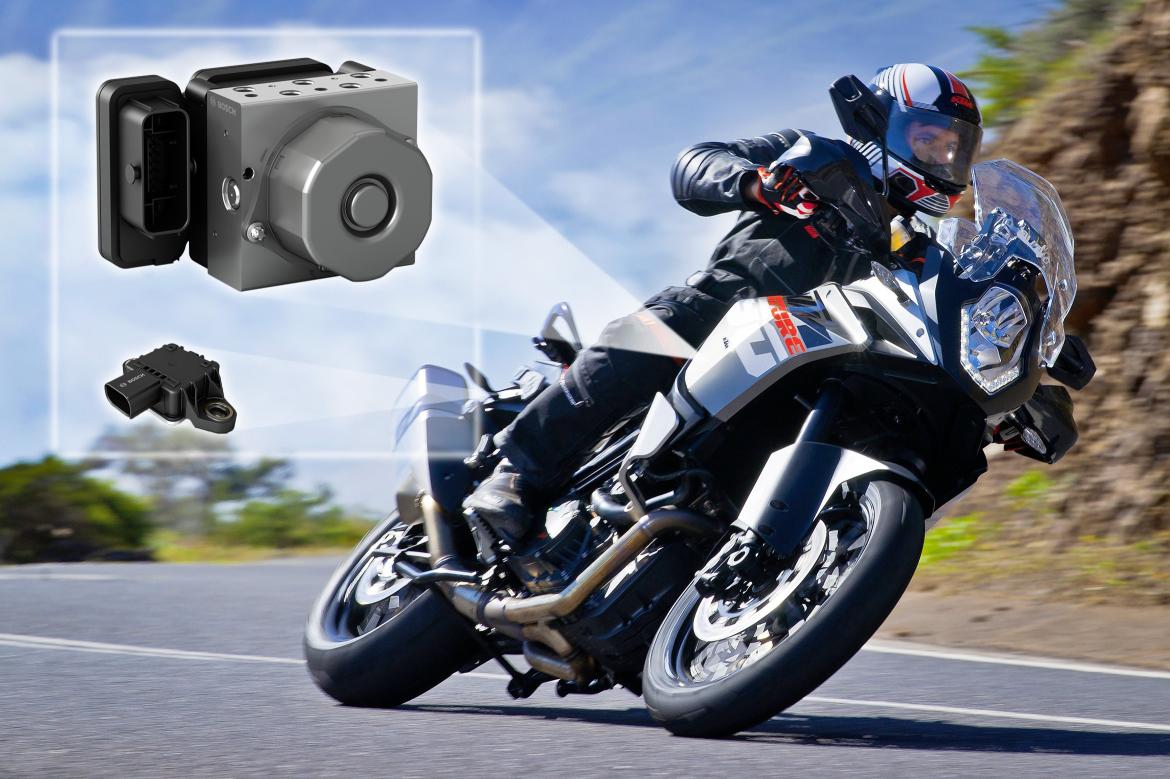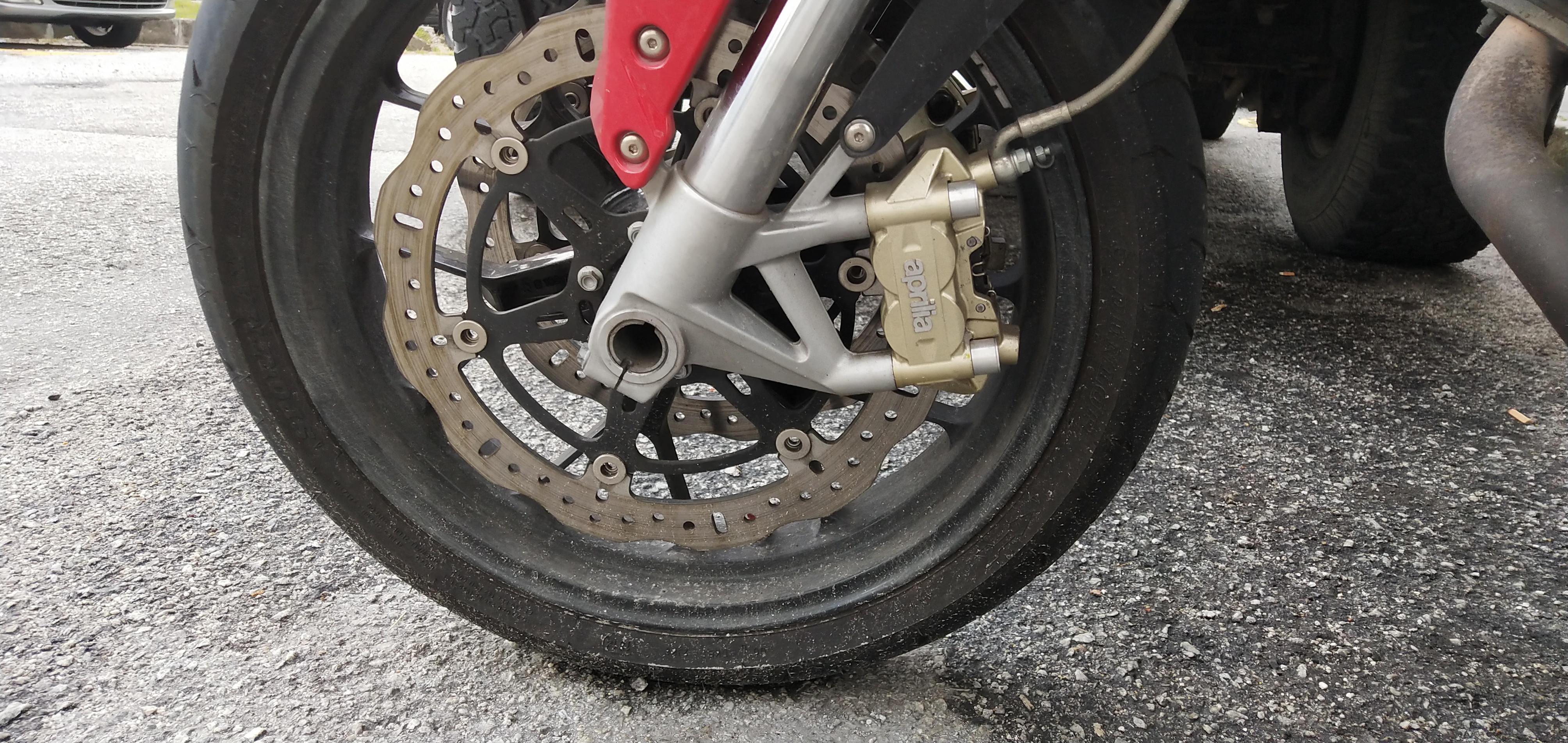
Bosch has developed motorcycle stability control (MSC), the first brake control system for motorcycles to ensure the best possible stability in all riding situations. It supports the biker during both braking and accelerating, and while riding straight as well as while cornering. The motorcycle’s handling – and thus all the pleasure of riding – remains unchanged. The system will already be available at the end of 2013 with the KTM 1190 Adventure and 1190 Adventure R 2014 models.
“Almost one in two fatal motorcycle accidents occurs in a bend,” says Gerhard Steiger, president of the Bosch Chassis Systems Control division. “The Bosch MSC motorcycle stability control can help further reduce the number of accidents.” In 2010, more than 5,000 motorcyclists died in road accidents in Europe alone. Studies show that ABS on its own can prevent around one-quarter of all motorcycle accidents that lead to injury or death. The new stability control will increase this number even further. 
Improved safety – also in bends
“The technical basis of the MSC is the ABS enhanced system for motorcycles,” says Fevzi Yildirim, head of the Bosch centre of competence for powered two-wheeler safety in Japan. “The new functions are made possible by an extensive array of sensors and sophisticated software.” This system offers motorcycle manufacturers and their demanding customers a whole range of safety functions:
- The lean and pitch angle-dependent ABS control improves riding stability in all riding situations as well as braking effectiveness.
- The traction control regulates the maximum engine torque so that even on variable or slippery road surfaces, the driving force is efficiently transferred to the road and the drive wheel does not lose its grip.
- When braking heavily in curves, the MSC reduces the motorcycle’s tendency to return to an upright position. This involuntary righting of the machine leads to a larger cornering radius, which often results in the motorcycle leaving its lane. In these situations, the eCBS electronic combined brake system creates the best possible distribution of brake force between the wheels, and thus stabilises the bike during cornering.
- The MSC also reduces the risk of ‘lowsiders’. These are accidents in which the motorcycle capsizes during cornering and the wheels slide out toward the outside of the bend. They occur when too much brake force is applied during cornering and the wheels are not able to transfer sufficient side force onto the road. MSC counteracts this by detecting the risk of a lowsider and limiting the maximum brake force. The eCBS function distributes this maximum available brake force between the wheels, ensuring the best possible brake performance under cornering conditions.
- The eCBS function ensures optimum distribution of brake force at all times – even when the biker mistakenly uses only one of the two brakes, or brakes with too much force.
- The wheelie-mitigation controls the engine torque, preventing the front wheel from lifting uncontrollably and at the same time ensuring maximum acceleration.
- The rear-wheel lift-up mitigation function keeps the rear wheel on the road by reducing the maximum brake force on the front wheel when riding on surfaces with high friction coefficients. Riding stability is maintained, taking pitch rate and longitudinal acceleration into account.
Electronic systems identify the limits of driving dynamics
The motorcycle stability control uses an extensive array of sensors to register the driving dynamics of the machine. Wheel sensors measure the rotational speed of the front and rear wheels, and an inertia sensor module computes the vehicle’s lean and pitch angles more than 100 times per second. By analysing the sensor data, the difference in speed between front and rear wheels, as well as other motorcycle-specific parameters such as tyre size, tyre shape, and sensor location, the ABS control unit calculates the physical limits of brake force on the basis of lean angle.
If the motorcycle stability control recognises that a wheel is starting to lock, the ABS control unit activates the pressure modulator in the hydraulic brake circuit. This lowers the brake pressure and builds it up again within a fraction of a second, with the result that exactly as much brake pressure is applied as is necessary to keep each wheel from locking.
For motorcyclists, the Bosch MSC can be a lifesaver. However, just like ABS, it cannot suspend the laws of physics. In particular, extreme misjudgement of the riding situation and major errors on the part of the biker can still lead to an accident. Nonetheless, the system supports bikers in borderline situations, helping them get more out of their motorcycles, while keeping them much safer at the same time.



